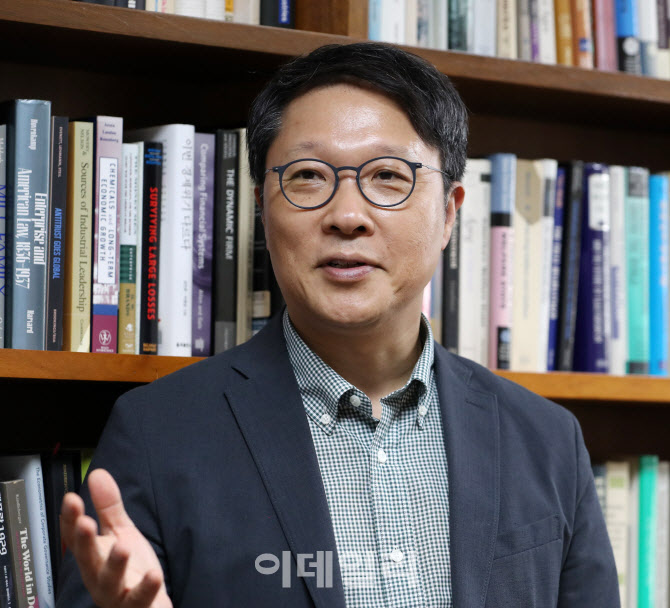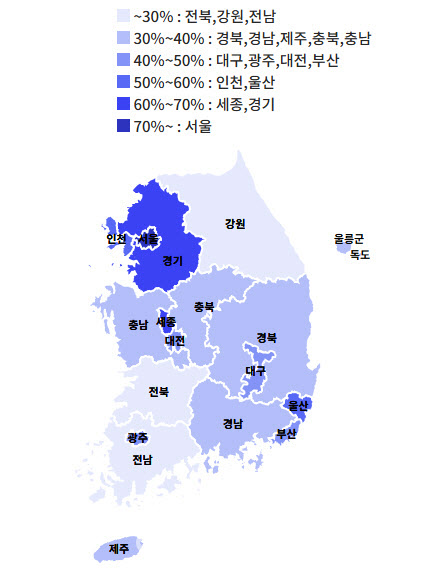In an interview with Edaily, Professor Cheol-hee Lee, Professor of Department of Economics, Seoul National University diagnosed that, in light of Korea’s changing demographic structure, local governments are bound to face fiscal difficulties, not only due to falling tax revenues but also due to declining efficiency in fiscal spending. He proposed that improving fiscal independence requires consolidation among local governments. Fiscal independence refers to the ability of a local government to manage its own finances; the closer to 100%, the more self-reliant its fiscal operations are.
|
“Working-Age Population Gap to Reach 26 times in 20 Years”
Professor Lee first pointed to the problem of population polarization. “Regional population imbalances are deepening rapidly,” he said. “The gap between the top 10% and bottom 10% of local governments by working-age population is already 13 times. In 20 years, that gap will double to 26 times.” He added, “If current trends continue, the number of cities, counties, and districts with fewer than 30,000 people will rapidly increase, while large cities will see little change. As regional disparities widen, various side effects will emerge.”
Professor Lee will speak at the Edaily-PERI Special Symposium on June 19 at the Shilla Hotel in Seoul, presenting on the impact of demographic change on local government fiscal independence. His analysis suggests that all regions, regardless of their current fiscal independence, will be negatively affected.
“I expect the number of basic local governments with fiscal independence below 10% to increase significantly,” he said. “Even fiscally sound local governments with rates above 40% are likely to sharply shrink.” The implication, he explained, is that local governments will become less able to respond to future demographic challenges. “Institutional changes at the central government level are needed to ease fiscal difficulties.”
According to the Ministry of the Interior and Safety, the average fiscal independence rate for Korea’s 243 cities and provinces in 2025 is 43.2%. Only 12 regions, mostly in Seoul, Gyeonggi, and Sejong, exceed the average. Including these, 43 regions have rates above 30%. More than half, 155 regions, fall in the 10~30% range, and 45 regions are below 10%.
|
Professor Lee suggested that multiple local governments should consider merging to achieve economies of scale. “Even with an aging population, increasing the overall population size through consolidation can improve fiscal independence,” he said. “By merging administrative districts or local governments, spending can be made more efficient and economies of scale can be achieved, improving fiscal conditions.”
He cautioned, however, that each local government’s situation is different and requires a scientific, nuanced approach. “Consolidating around designated hubs is not easy due to political realities, so it’s important to present an objectively reasonable blueprint,” he said. While political consensus is necessary, Professor Lee argued that it is worth considering such measures to break the vicious cycle of population decline, shrinking demand, collapsing infrastructure in healthcare and childcare, and further population loss.
He also advised approaching the issue from the perspective of public interest. “A lot of fiscal resources may be required, but breaking the vicious cycle before outcomes worsen is the priority,” he said. “Ultimately, strengthening public services is the only answer.”
“At least, essential infrastructure should be established in designated hub areas at the township level, while ensuring at least basic public services in non-hub areas. New approaches such as telemedicine, emergency transport systems, birthing centers, and homeschooling could be considered,” he suggested. “Local governments also need to coordinate how to allocate and share infrastructure and resources, and cost-sharing must be discussed.”
About Cheol-hee Lee, Professor of Department of Economics, SNU:
He holds bachelor’s and master’s degrees in economics from Seoul National University and a Ph.D. from the University of Chicago. He has served on the Gender Equality Committee, the Foreigners Policy Committee, the Presidential Committee on Low Fertility and Aging Society, and as chair of the Economic and Social Labor Council’s research group on aging society. He is currently head of the Population Cluster at the SNU Institute for Future Strategy.








!["청년 ''도시 선호'' 수용해야…빈집 철거해 도시 밀도↑"[ESF 2025]](https://image.edaily.co.kr/images/Photo/files/NP/S/2025/06/PS25061901218t.jpg)

![[단독]전광훈 '자금줄' 의혹 선교카드…농협銀 문제없다 결론](https://image.edaily.co.kr/images/vision/files/NP/S/2025/08/PS25080701300t.jpg)


